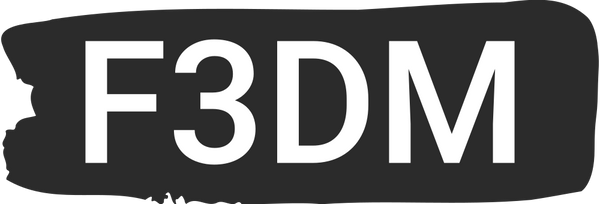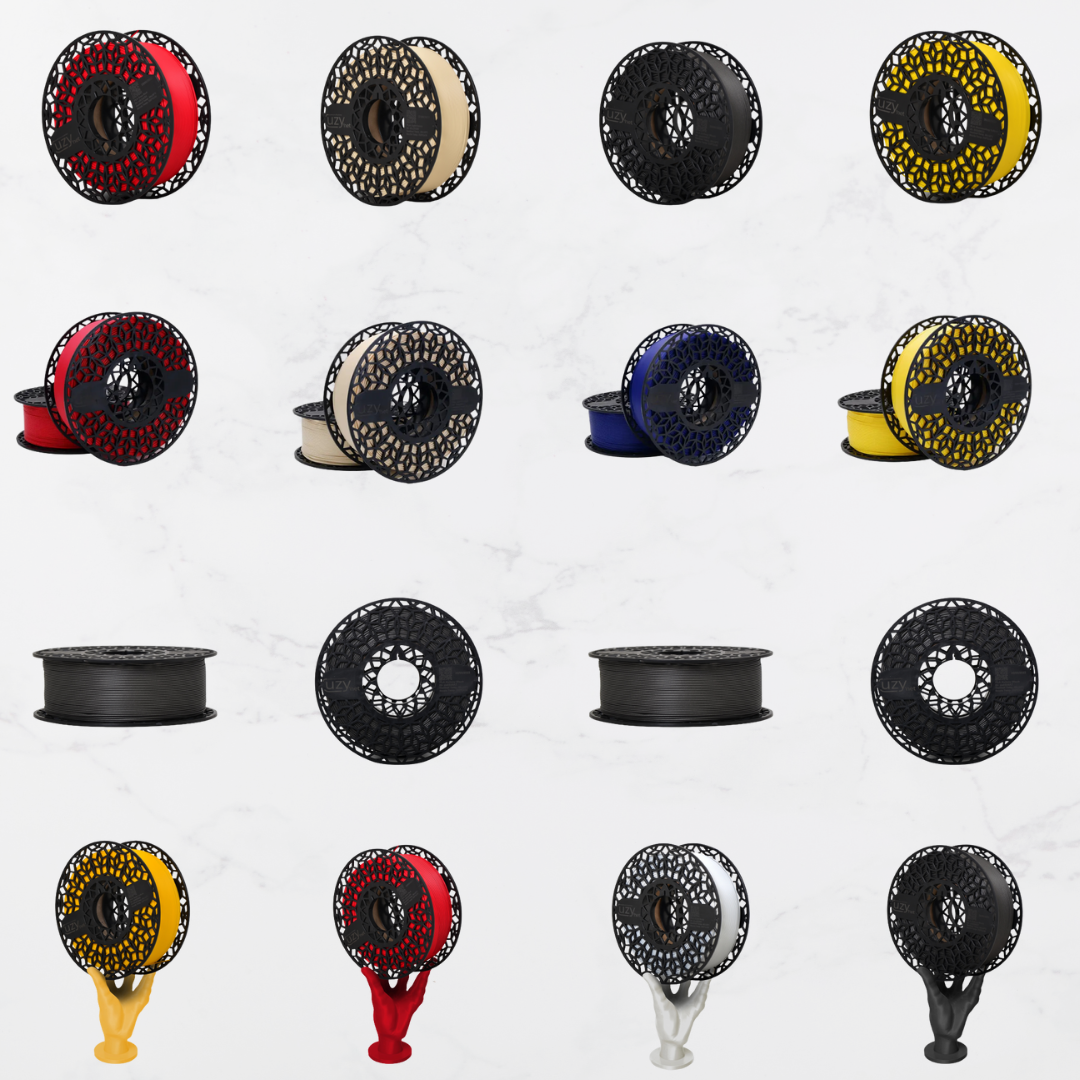What are the different types of filaments used in 3D printing? Find out here!
Learn about the different types of filaments available today and their uses.
Discover what type of filament is best suited for your 3D printer.
You'll be surprised by what kind of filament you can buy online. Find out more about the different types of filaments available today!
Filament is the term used to describe the materials used to make 3D printed objects. The most common filaments are PLA, ABS, PETG, nylon, and others. Each type of filament has its own advantages and disadvantages. Some filaments are better suited for certain tasks than others.
PLA
The first 3D printers were invented in the 1980s, and they used plastic materials like nylon and ABS. These plastics were cheap and easy to produce, but they had several drawbacks. They didn't last very long, and they weren't very strong. So, in the 1990s, researchers developed new materials that would be stronger and last longer. Today, there are two main types of 3D printer filaments: ABS and PLA. Both are made out of thermoplastic polymers, which are basically long chains of molecules that melt when heat is applied. But while ABS melts at about 160 degrees Celsius, PLA melts at about 120 degrees Celsius. This means that you don't need a heated bed to print with PLA, which makes it easier to use. However, PLA is much weaker than ABS, so if you're trying to make a part that needs to hold up to repeated drops, you'll want to stick with ABS.
3D PRINTER FILAMENT PROPERTIES: PLA
Strength: Medium | Flexibility: Low | Durability: Medium
Difficulty to use: Low
Print temperature: 180 – 230°C
Print bed temperature: 20 – 70°C (but not needed)
Shrinkage/warping: Minimal
Soluble: No
Food safety: Refer to manufacturer guidelines
WHAT IS UZY PLA FILAMENT?
PLA (Polyactic Acid) filament raw material is corn starch and sugar cane. These raw materials are fermented to produce biopolymers and thermoplastics. UZY Premium PLA is harmless to human health thanks to its filament raw material structure. It can be used easily in environments such as home, office and school. There is no need for a ventilation system as it gives off very little and harmless odor during printing.
Even if our premium PLA series filaments are left in open environments, they show a staling reaction after a much longer time than similar products and have a shelf life of 3 years. Even after weeks, you can get prints without stringing.
THE BEST PLA FORM PRODUCED - MEET WITH UZY PREMIUM PLA SERIES
WE CREATED OUR PASSION, WE SHARE OUR PASSION
SAY GOODBYE TO PROBLEMS! PERFECT WINDING & SMOOTH PRINTING
CERTIFIED QUALITY AND FLAWLESS MANUFACTURING PROCESS
ABS
ABS is a thermoplastic polymer that is commonly used in 3D printers because of its strength and resistance to heat. It is often used in products like toys, car parts, and kitchen utensils. The most common type of ABS is acrylonitrile butadienestyrene (ABS). This is a copolymer of polyacrylonitrile and polybutadiene. It is a tough plastic that is strong enough to resist impact damage and heat up to about 200 degrees Celsius. It is not recommended for food contact applications.
The most common type of 3D printer filament is PLA. This material is made from corn starch and sugarcane juice. It’s strong, durable, and easy to use. However, PLA tends to warp when printed at low temperatures, so it’s not ideal for prints requiring tight tolerances. Other materials, like ABS, are stronger than PLA, but they tend to melt if exposed to heat. They’re great for prints that require high tolerance, but they don’t hold up well to repeated heating and cooling cycles.
3D PRINTER FILAMENT PROPERTIES: ABS
Strength: High | Flexibility: Medium | Durability: High
Difficulty to use: Medium
Print temperature: 210 – 250°C
Print bed temperature: 80 – 110°C
Shrinkage/warping: Considerable
Soluble: In esters, ketones, and acetone
Food safety: Not food safe
PETG
PETG is a type of filament that is commonly used in 3D printers. It's made up of long chains of carbon atoms joined together by oxygen atoms. It's often referred to as "polyethylene terephthalate glycol modified." It's a bit like plastic, but not quite. It's stronger than regular plastic, so it's better suited for making things that need to withstand lots of wear and tear.
In addition to being a common plastic used in everything from water bottles to clothing fibers, polyethylene terephthalte (PET) is also used in 3D printers. It is a clear, strong, and versatile material that is relatively easy to print with. However, it is susceptible to absorbing moisture and scratching easily, so it is best suited for functional parts rather than decorative ones.
3D PRINTER FILAMENT PROPERTIES: PETG (PET, PETT)
Strength: High | Flexibility: Medium | Durability: High
Difficulty to use: Low
Print temperature: 220 – 250°C
Print bed temperature: 50 – 75°C
Shrinkage/warping: Minimal
Soluble: No
Food safety: Refer to manufacturer guidelines
TPE, TPU, TPC
The material could be melted and shaped using a heated nozzle on a 3D printer. However, the material had a tendency to stick together during the printing process. To solve this problem, the researchers added a small amount of silicone oil to the mixture. This helped keep the nylon and plastic apart while allowing the material to flow through the nozzle. Today, there are several varieties of 3D printer filament available. Some are made of nylon, some are made of polylactic acid (PLA), and others are made of polycarbonate (PC). Each type of filament has its own advantages and disadvantages.
3D PRINTER FILAMENT PROPERTIES: TPE, TPU, TPC (FLEXIBLE)
Strength: Medium | Flexibility: Very High| Durability: Very High
Difficulty to use: Medium (TPE, TPC); Low (TPU)
Print temperature: 210 – 230°C
Print bed temperature: 30 – 60°C (but not needed)
Shrinkage/warping: Minimal
Soluble: No
Food safety: Not food safe
NYLON
Nylon is an incredibly strong, durable and versatile 3D printing material. Flexible when thin, but with very high interlayer adhesion, nylon adapts well to things like movable hinges and other functional parts. Nylon filament prints as a bright, natural white with a translucent surface and can absorb colors added after treatment with most common acid-based garment dyes or synthetic fabric-specific dyes. Nylon filament is extremely sensitive to moisture, so it is highly recommended to take drying measures during storage and immediately before printing (using a tumble dryer, vacuum or high temperature) for best results. Nylon for 3D printing tips and tricks
3D PRINTER FILAMENT PROPERTIES: NYLON
Strength: Very High | Flexibility: High | Durability: High
Difficulty to use: Medium
Print temperature: 240 – 260°C
Print bed temperature: 70 – 100°C
Shrinkage/warping: Considerable
Soluble: No
Food safety: Refer to manufacturer guidelines
PC
Polycarbonate (PC) is a thermoplastic material used in many industries, including construction, electronics, transportation, and optics. It’s often used in 3D printing because of its durability and resistance to heat and physical impact. The material is also optically clear, making it useful for creating displays and other products where transparency is required.
3D PRINTER FILAMENT PROPERTIES: PC (POLYCARBONATE)
Strength: Very High | Flexibility: Medium | Durability: Very High
Difficulty to use: Medium
Print temperature: 270 – 310°C
Print bed temperature: 90 – 110°C
Shrinkage/warping: Considerable
Soluble: No
Food safety: Not food safe
WOOD-FILLED FILAMENT
The term ‘woodfill’ refers to the process used to infuse PLA with wood fibers. This is done by adding wood particles to the extruder during the manufacturing process. The wood particles are added in small quantities so that the final product looks and feels like wood. However, the wood particles do reduce the overall strength of the material.
Filament made from wood pulp is often referred to as woodfill. It is a very common material used in 3D printing because it is cheap, easy to obtain, and readily available. The downside to using woodfill is that it tends to degrade over time, causing the printed object to become brittle and breakable. This is especially true if the object is left outside in direct sunlight. To combat this problem, some people use a combination of woodfill and ABS plastic to create stronger prints.
3D PRINTER FILAMENT PROPERTIES: WOOD-FILLED
Strength: High | Flexibility: Medium | Durability: High
Difficulty to use: Medium
Print temperature: 190 – 230°C
Print bed temperature: 60 – 80°C
Soluble: No
Food safety: Not food safe
METAL FILLED FILAMENT
Metal filled filament is a new kind of filament that combines the strength of metal with the flexibility of plastic. The result is a strong, flexible material that looks like metal. The idea behind it is to create a filament that looks like metal but is not actually made out of metal. Instead, it’s a mixture of metal powder and plastic. This allows users to print objects that look like they’ve been cast in metal. The result is a filament that feels like metal, looks like metal, and even smells like metal. This makes it perfect for creating objects that look like real metal, but don’t require the high temperatures needed for traditional metalworking processes.
There are many different types of filaments available on the market today. Which one should you choose?
3D Printer Filaments: What They Are, Where To Find Them, And How Much They Cost
Visit for more; https://metatechtr.uk/

